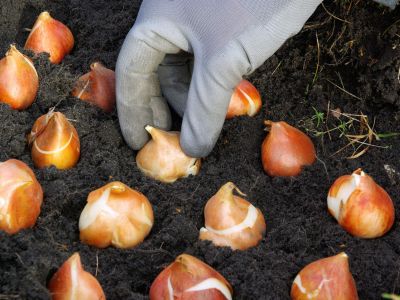What is a Bulb?
A bulb is typically a sphere-shaped bud. All around the bud is a fleshy membrane called scales. These scales contain all the food the bulb and flower will need to grow. There is a protective coating around the bulb called a tunic. There are different types of bulbs with a few differences, but the one thing they all have in common is they produce a plant from an underground food storage supply. They all perform better when planted correctly. Bulbs and corms are very similar to each other. The only real difference is the way they store food, and corms are much smaller and tend to be flatter in shape rather than round. Tubers and roots are similar to each other in that they are just enlarged stem tissue. They come in all shapes and sizes, from flat to oblong and sometimes come in clusters.
Planting Flower Bulbs – Which Way Up
So, which way up do you plant bulbs? Bulbs can be confusing when trying to figure out the top from the bottom. Most bulbs, not all, have a tip, which is the end that goes up. How to tell which way is up is by looking at the bulb and locating a smooth tip and a rough underside. The roughness comes from the roots of the bulb. Once you have identified the roots, face it downward with the pointy tip up. That is one way to tell which way to plant bulbs. Dahlia and begonias are grown from tubers or corms, which are flatter than other bulbs. Sometimes it is tricky to determine what direction for planting bulbs in the ground because these don’t have an obvious growing point. You can plant the tuber on its side and it will normally find its way out of the ground. Most corms can be planted with the concave portion (dip) facing upwards. Most bulbs, however, if planted in the wrong direction, will still manage to find their way out of the soil and grow toward the sun.
